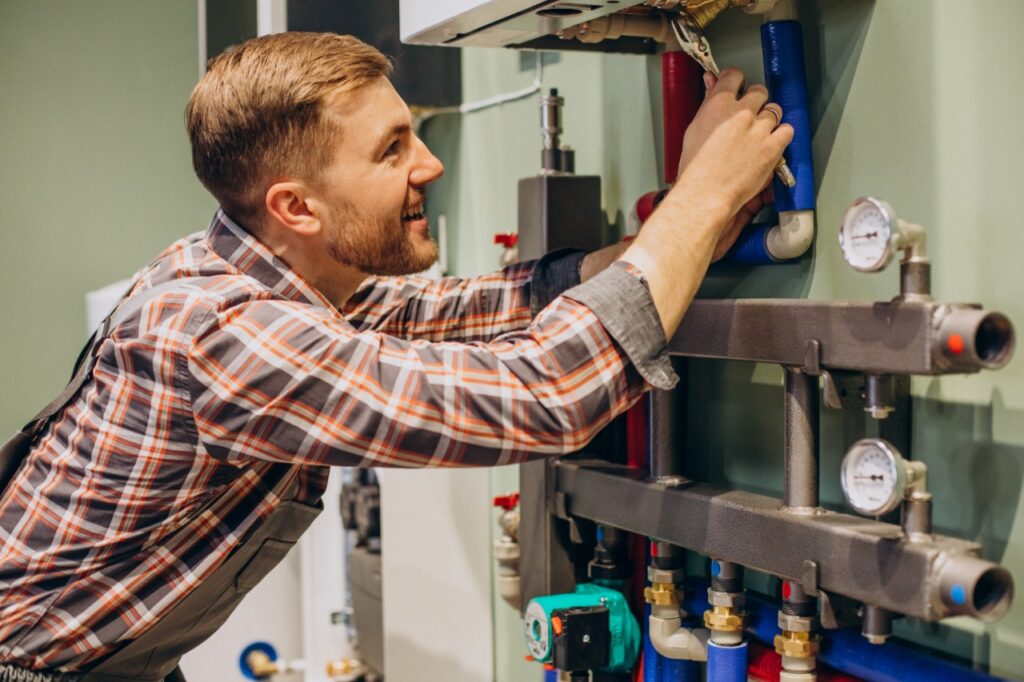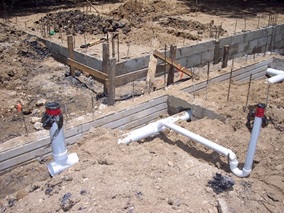Key Information About Your House's Plumbing System Anatomy
Key Information About Your House's Plumbing System Anatomy
Blog Article
Are you interested in information and facts concerning Exploring Your Homes Plumbing Anatomy?

Comprehending exactly how your home's plumbing system works is essential for every single home owner. From delivering clean water for drinking, cooking, and bathing to securely getting rid of wastewater, a well-maintained pipes system is vital for your family members's health and wellness and convenience. In this detailed guide, we'll explore the detailed network that composes your home's plumbing and deal ideas on maintenance, upgrades, and dealing with common issues.
Introduction
Your home's plumbing system is more than simply a network of pipelines; it's a complex system that ensures you have accessibility to tidy water and efficient wastewater removal. Recognizing its components and just how they interact can aid you stop costly fixings and make certain every little thing runs smoothly.
Standard Components of a Pipes System
Pipes and Tubes
At the heart of your plumbing system are the pipes and tubes that carry water throughout your home. These can be constructed from various products such as copper, PVC, or PEX, each with its advantages in regards to resilience and cost-effectiveness.
Fixtures: Sinks, Toilets, Showers, and so on.
Fixtures like sinks, commodes, showers, and bathtubs are where water is utilized in your home. Understanding how these components connect to the plumbing system helps in identifying troubles and planning upgrades.
Shutoffs and Shut-off Factors
Valves regulate the flow of water in your plumbing system. Shut-off valves are vital during emergencies or when you need to make fixings, enabling you to isolate parts of the system without interrupting water circulation to the whole house.
Water Supply System
Key Water Line
The main water line connects your home to the local water supply or a private well. It's where water enters your home and is distributed to numerous components.
Water Meter and Stress Regulatory Authority
The water meter measures your water usage, while a stress regulatory authority makes certain that water streams at a risk-free stress throughout your home's plumbing system, stopping damage to pipes and fixtures.
Cold Water vs. Hot Water Lines
Comprehending the distinction between cold water lines, which provide water straight from the major, and warm water lines, which lug heated water from the water heater, helps in fixing and preparing for upgrades.
Drain System
Drain Pipes Piping and Traps
Drain pipelines carry wastewater away from sinks, showers, and bathrooms to the drain or sewage-disposal tank. Catches stop sewage system gases from entering your home and likewise catch particles that can create obstructions.
Ventilation Pipes
Ventilation pipes enable air into the drain system, stopping suction that can slow down drainage and cause traps to empty. Appropriate ventilation is vital for keeping the honesty of your pipes system.
Significance of Proper Drain
Making sure proper drainage stops backups and water damages. Consistently cleansing drains pipes and keeping catches can stop expensive repair work and prolong the life of your pipes system.
Water Furnace
Types of Water Heaters
Water heaters can be tankless or conventional tank-style. Tankless heating units heat water on demand, while tanks save warmed water for prompt use.
How Water Heaters Connect to the Plumbing System
Understanding how water heaters attach to both the cold water supply and hot water distribution lines assists in detecting concerns like insufficient hot water or leaks.
Maintenance Tips for Water Heaters
Frequently purging your hot water heater to remove sediment, inspecting the temperature level setups, and checking for leakages can extend its life-span and improve energy efficiency.
Typical Pipes Concerns
Leaks and Their Causes
Leakages can occur because of maturing pipes, loose fittings, or high water stress. Addressing leakages quickly protects against water damage and mold growth.
Obstructions and Clogs
Obstructions in drains and toilets are usually triggered by flushing non-flushable things or an accumulation of oil and hair. Utilizing drain displays and bearing in mind what decreases your drains can avoid clogs.
Indicators of Plumbing Problems to Expect
Low water stress, sluggish drains, foul odors, or uncommonly high water bills are indicators of possible pipes problems that must be dealt with without delay.
Plumbing Upkeep Tips
Routine Evaluations and Checks
Set up yearly plumbing inspections to capture problems early. Search for signs of leakages, corrosion, or mineral build-up in faucets and showerheads.
Do It Yourself Maintenance Tasks
Basic tasks like cleansing faucet aerators, checking for toilet leaks making use of dye tablets, or insulating exposed pipelines in cold environments can protect against significant plumbing issues.
When to Call a Specialist Plumbing Professional
Know when a plumbing issue needs expert competence. Attempting complicated repairs without correct expertise can bring about even more damages and greater repair service expenses.
Upgrading Your Plumbing System
Reasons for Upgrading
Upgrading to water-efficient fixtures or replacing old pipelines can boost water top quality, minimize water expenses, and boost the value of your home.
Modern Plumbing Technologies and Their Benefits
Discover modern technologies like wise leakage detectors, water-saving toilets, and energy-efficient water heaters that can conserve cash and minimize ecological effect.
Cost Considerations and ROI
Determine the ahead of time expenses versus long-lasting cost savings when thinking about pipes upgrades. Numerous upgrades pay for themselves via lowered energy expenses and fewer repairs.
Ecological Impact and Conservation
Water-Saving Components and Devices
Setting up low-flow faucets, showerheads, and toilets can dramatically decrease water usage without giving up efficiency.
Tips for Reducing Water Use
Simple routines like dealing with leaks without delay, taking much shorter showers, and running full lots of laundry and recipes can conserve water and reduced your energy expenses.
Eco-Friendly Pipes Options
Consider lasting plumbing materials like bamboo for floor covering, which is durable and environment-friendly, or recycled glass for countertops.
Emergency Readiness
Actions to Take During a Pipes Emergency situation
Know where your shut-off valves lie and how to turn off the water system in case of a ruptured pipe or major leakage.
Importance of Having Emergency Get In Touches With Helpful
Maintain call information for regional plumbing professionals or emergency situation services easily offered for fast feedback during a plumbing dilemma.
Do It Yourself Emergency Fixes (When Appropriate).
Short-term repairs like making use of air duct tape to patch a leaking pipeline or positioning a pail under a dripping faucet can minimize damage up until an expert plumbing professional arrives.
Final thought.
Comprehending the anatomy of your home's pipes system encourages you to keep it effectively, saving time and money on repair work. By complying with routine upkeep routines and staying notified concerning contemporary plumbing technologies, you can guarantee your pipes system operates efficiently for years ahead.
Exploring Your Homes Plumbing Anatomy
Water Supply System
Main Water Line: This is where water enters your home from the municipal supply or a private well.
Water Meter: Typically located near where the main water line enters the property, it measures the amount of water used.
Shutoff Valve: It s crucial to know where this is in case of emergencies. It allows you to turn off the water supply to the entire house.
Pipes and Fittings: These distribute water throughout your home. Materials can include copper, PVC, or PEX.
Drain-Waste-Vent (DWV) System
Drains: Located in sinks, showers, and tubs, these carry wastewater away.
Traps: U-shaped pipes under sinks that hold standing water, blocking sewer gases from entering the home.
Vents: Pipes that lead from the DWV system to the outside, preventing vacuum formation and allowing gases to escape.
Sewer Line: Carries all wastewater from the home to the municipal sewer system or a septic tank.
Fixtures and Appliances
Sinks, Toilets, and Showers
Dishwashers and Washing Machines
Water Heaters
Maintenance Tips
Regularly check for leaks in exposed pipes and around fixtures.
Inspect the water heater annually for signs of wear.
Clean drains and traps to prevent clogs and odors.
Know how to shut off water to individual fixtures.
When to Call a Professional
Major leaks or burst pipes
Installation of new pipes or fixtures
Septic tank issues
Remodeling projects that involve plumbing changes
Conclusion
Understanding the anatomy of your home's plumbing is key to maintaining a functional and efficient system. Regular checks and knowing when to call in the experts can save you time, money, and stress.
https://www.mavyn.com/blog/exploring-your-homes-plumbing-anatomy

Exploring Your Homes Plumbing Anatomy
Water Supply System
Drain-Waste-Vent (DWV) System
Fixtures and Appliances
Maintenance Tips
When to Call a Professional
Conclusion
Understanding the anatomy of your home's plumbing is key to maintaining a functional and efficient system. Regular checks and knowing when to call in the experts can save you time, money, and stress.
https://www.mavyn.com/blog/exploring-your-homes-plumbing-anatomy
As a fervent reader about Understanding Your Home's Plumbing Anatomy, I was thinking sharing that piece of content was worthwhile. If you please pause to distribute this page if you liked it. Thank-you for going through it.
Website Report this page